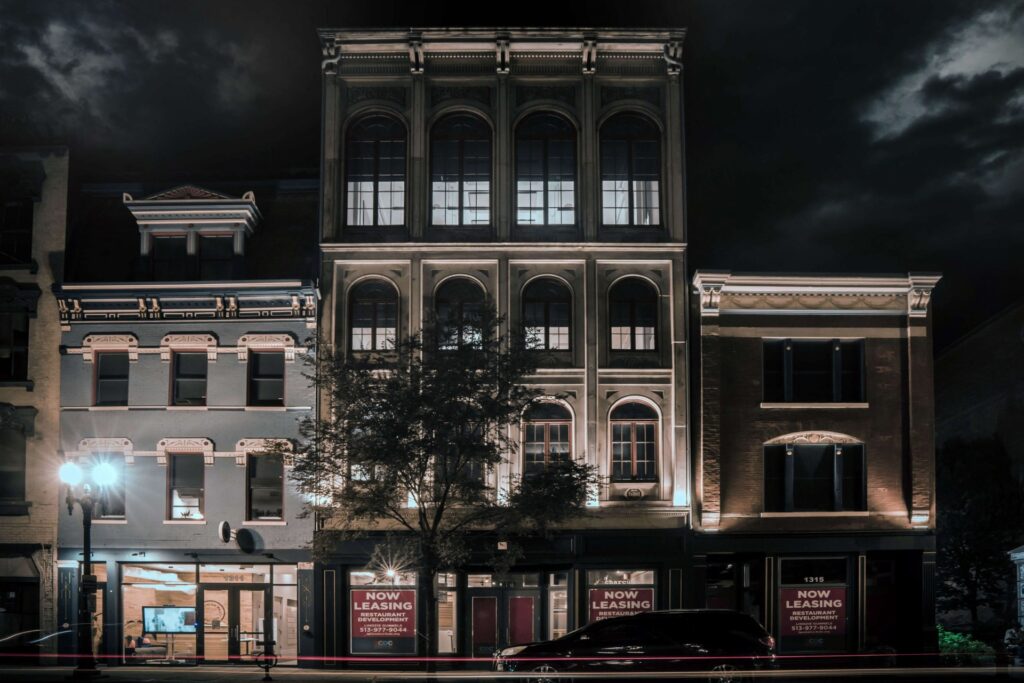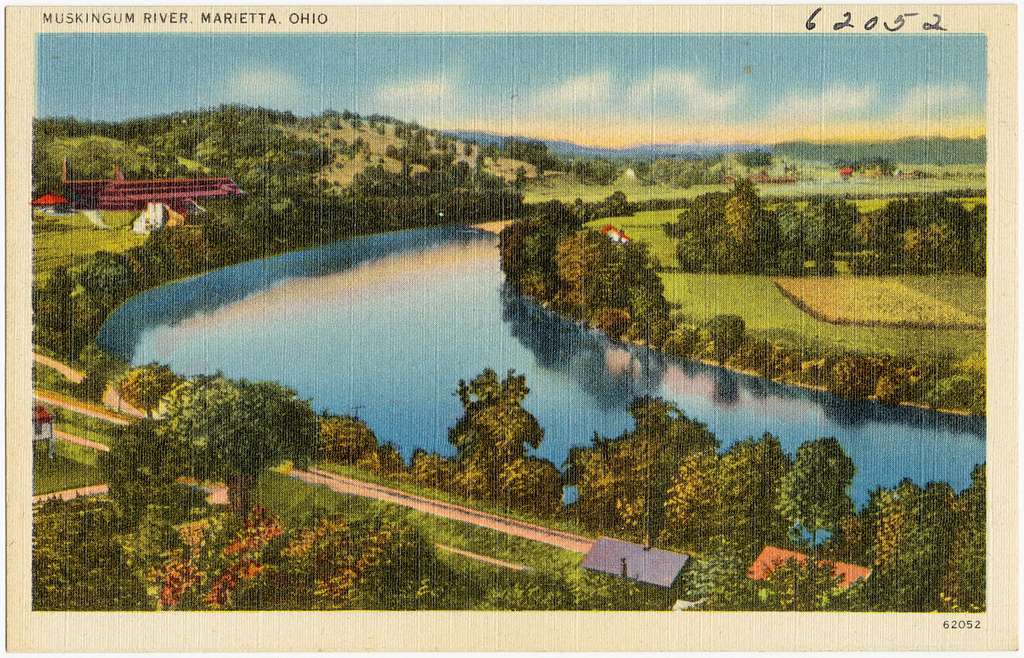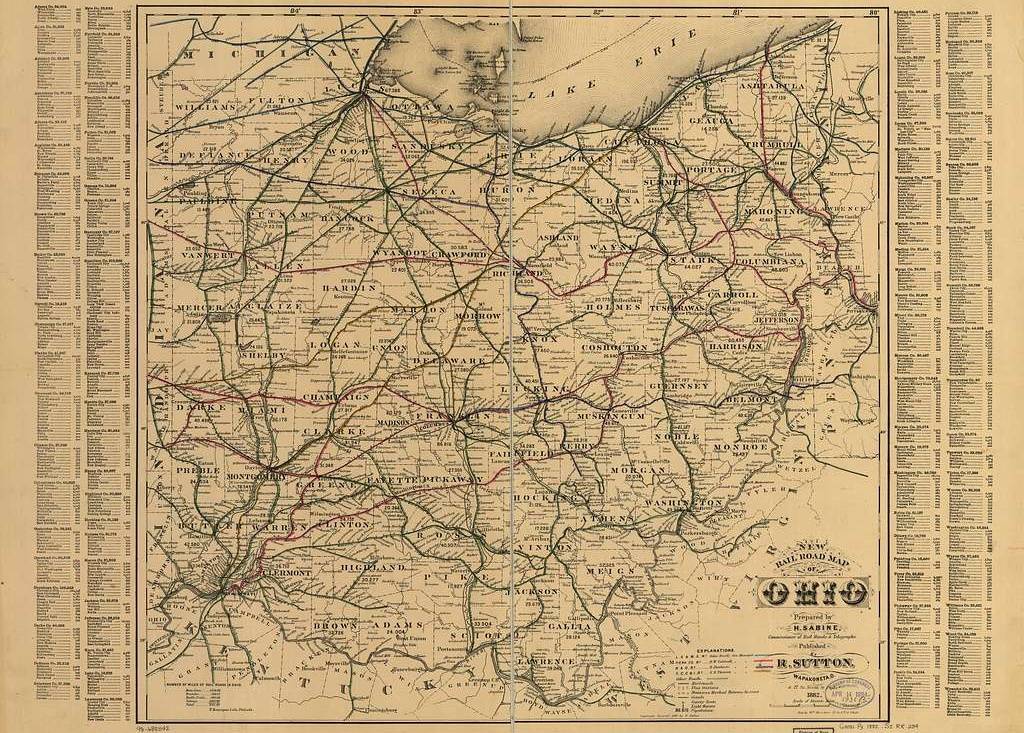As I sit down to write this, Halloween is approaching and that means one thing. Aunt Irma is going to be complaining that everything has suddenly gone “Pumpkin Spice’ because she is still bitter that all the companies rejected her idea for Pumpkin Spice Denture Cream.
Okay, it also means that you can’t turn around without seeing an advertisement for some “historical ghost tour” that promises to take you to all the popular haunted spots in town (yet, strangely don’t allow you to actually enter many of them.)
Most of these ghost tours feature various “haunts” throughout the city, but there is one address that seems to appear in just about all of them: 1313 Vine Street. You’ll hear people talk about cold spots in the sub-basements. Or, phantom noises coming from various parts of the building.
I really had to wonder why this address in particular appeared to be on all the ghost tours? Was it the site of some mass murder or weird religious cult or the site of a fire that killed a bunch of people? Well, not really. There may have been a few deaths associated with the address from the time of prohibition, but really what tavern was safe in the US back in the 1920s?
Even though the building has (obviously) been modernized a time or three over the centuries, it is one of the older buildings in town (although not the oldest). And, it has been connected (even if very loosely) to countless historical figures over the years, so perhaps that explains why all the people seem to want to go there looking for ghosts.
Or, is the clue in the address? 1313 Vine. Double Thirteen Unlucky Number!?
Well, no matter the cause, the history of the place does have a rather lengthy history to tell.
1313 Vine St Before It Was 1313 Vine Street
The history of the building goes back to the 1850s when a man named Peter Noll erected a building there and opened the Cincinnati Brewery, although the address was 469 Vine St, not 1313. By 1860, Jacob F. Flattich converted it from a brewery into a “coffee house”. By that, I mean that it was a place to hang out for awhile, drinking any type of beverage you could possibly want, legality withstanding. In 1863, Peter Dilg took over the building, turning it back into a saloon. That saloon was taken over in 1866 by Edward Koppe, in 1870 by Albert Forster, then five years later by Peter Brehm. When Herman Heyne took charge in 1876, he changed the name to Saenger Hall.
It may be of historical note that 1313 Vine Street was also listed as the official meeting place of various groups and societies, such as:
- A.O. Good Fellows Washington Lodge No 1 and Humarina Lodge No 8
- Seven Wise Men Cincinnatus Conclave No 1 and Rueckert Conclave No 2 and Germania Encampment No 1
Historically speaking, this kind of thing is not unusual. Men of the time often joined fraternal orders, such as the Freemasons or the Odd Fellows, which usually consisted of some variety of activity, followed by a more social time of fraternizing, and at some point in history someone came up with the brilliant idea that instead of going from the lodge (or whatever the meeting place was called) then walking to the nearest pub, why not do everything at the local tavern and save everyone some time and energy…?
1895 or When 1313 Vine became 1313 Vine
In 1895, all addresses in Cincinnati were going through a bit of a confusing transition. To make a long story short, several years prior the city had gone from having seemingly random numbers used for street addresses to a system that didn’t really work because it was only slightly logical, but then it changed again around 1891 but didn’t really go in effect until 1895 but by then there was so much fraud that nobody knew what the heck was happening.
What we do know is that, at least in terms of surviving records, it was some time in 1896 when 469 Vine Street became 1313 Vine Street.
Other than all the addresses on Vine Street getting new numbers, there was another change that was slowly reshaping the landscape. Main Street was slowly becoming less of a main street as Vine was Now considered the main thoroughfare. Now, Vine Street was home to some of the best taverns in the city, as well as the best theaters (which critics say rivaled the ones in New York and Los Angeles.)
Vine Street was getting a bit of a reputation, but at least it wasn’t as bad as certain other streets in town. Still, with most of the establishments serving alcohol, and it being the new main street, that reputation was well earned.
In fact, in 1901, temperance firecracker Carrie Nation visited the city to protest at saloons. However, she abandoned her usual method of smashing tavern windows and said that if she tried that on Vine Street, she’d have died of exhaustion by the time she had finished the first block.
Also, sometime around 1901, according to many historians, at the Heuck’s Opera House, which was practically next door to 1313 Vine Street, a new form of “entertainment” was born – the burlesque “Strip Tease”. And, it wouldn’t be long before that craze was seeping the nation.
1313 Vine as 1313 Vine
Charles Groshell bought the property in 1892 and converted it from a salloon into a dance and reception hall, but by 1895 Christian Polster turned it back into a saloon again.
The next owner was Wendel Meyer in 1897, who renamed it Cosmopolitan Hall (and he added a few things, such as a bowling alley.) He also advertised the address as “halls for societies”.
Now the space was being used for more than just societies like the Oddfellows or the Seven Wise Men – added to the ranks included trade unions, professional groups such as the Cincinnati Retail Grocers’ Association, even religious groups.
In 1901, 1313 Vine Street had such a reputation of its own that even Mary G. Harris Jones (otherwise known as “Mother” Jones) had to come to town to check it out for herself, even giving one of her famous speeches there.
There is one bit of history from Meyer’s time that remains to this day: tokens. While Meyer ran the Cosmopolitan Bowling Alley and Halls for Societies, he took advantage of an old tradition – using tokens as a way to promote his business. Cosmopolitan Tokens came in two varieties – decorative tokens, whose sole purpose was to advertise a business; and “Good Fors” which weren’t purchased as much as they were traded and while the coins had no monetary value, they could be used only at a specific establishment for goods (a drink) or services (a game of bowling).
Many coin and memorabilia collectors have old tokens from the Cosmopolitan days among their collections.
By 1910, things were set to change at 1313 Vine Street yet again, as Meyer had passed away and Frank Duttenhofer had taken over. He continued to operate as The Cosmopolitan, although the establishment did have a few “issues” during his tenure. For example, a 1918 article in the Cincinnati Inquirer describes the “evils” taking place within its walls, such as young girls (younger teenagers) dancing with middle aged men, drinking beers, and the like.
It wouldn’t be long before Prohibition started, and the Cosmopolitan became known as one of Cincinnati’s worst kept secrets. Now, one of the building’s “secrets” took on some new importance.
Caves, for lack of a better word, had been dug out underneath the establishment and used for storage, as it was naturally cool and dark, which were ideal conditions for this sort of purpose. During prohibition, however, they took on the added responsibility of “hiding” the alcohol and making it harder for law enforcement to discover where they kept the stuff.
Following the prohibition days, ownership transferred to Joseph Rosenberger who installed the Coral Gables Indoor Golf Course, as if the building really needed something else in it.
In 1947, The Cosmopolitan was no more as a new type of establishment opened under the ownership of Ray Bellonby, who turned it into a furniture store. He was also the one who isntalled the marble “Bellonby” in the entryway.

At some point in 1956, it became the Welsbach Sales Co, a seller of electronics equipment.
A New Era for 1313 Vine Street
In 1991, 1313 Vine became a fictional nightclub that was located in New York City. If that seems kind of impossible, there is a very logical explanation… they were filming a movie, see … with some well-known names like Forest Whitaker, Danny Glover, Robin Givens and Gregory Hines.
That film was called A Rage in Harlem. (And it seems to have been a commercial success.)
The following year, a (non-fictional) night club returned to 1313 Vine St., The Wearhouse, where DJ Gunter was known to play alternative rock from bands like The White Zombies and KMFDM. The club was a popular feature among the younger (18+) crowd (kinda goth, kinda punk, maybe LGBT+) until it finally closed its doors for good in 2004, after which it remained vacant for a few years.
The property was, as of 2006, the focus of several 3CDC (The Cincinnati Center City Development Corporation) projects. The building had been granted Historic Status, which made it eligible for restoration and the 3CDC were the people who do just that. Parts of the building were renovated and converted into office spaces, while others were preserved and restored. Soon, it would become a highlight on historic tours, as well as “Ghost Hunting” tours, especially around Halloween.
Today, a tavern does operate at the address – Krueger’s Tavern … and from their website, it looks as if they serve some pretty good food.
Wait … Didn’t Someone Say Ghosts?
Even today, the 1313 Vine Street is included on many “Ghost Tours” that operate within the city of Cincinnati … and it’s not hard to find examples of supernatural tales that are set there.
I’m just not sure why.
The majority of “haunted” places seem to be associated with some type of horrific event that took place there, be that a brutal murder or where victims were abused, and I haven’t seen much in the history of the place that would support this idea.
Many of the ghostly tales (supposedly) date back to the early 1900s through the prohibition era, a time when “gangsters” ruled the streets, and they weren’t always the prime example of law-abiding citizens. Sometimes, people did “go missing” and their stories aren’t exactly recorded in the history books.
Some of the ghost stories I’ve heard associated with 1313 Vine Street are merely variations of popular ghost stories or urban legends that seem to happen all over the USA. For example, one ghost story involves a man who met a distraught woman at the dance hall and he offered to give her a ride home. However, when the car passed a local cemetery, the woman just vanished. The driver makes his way to the address the woman had given him only to discover that a women with her name had lived at that address only to have died a few years before.
Most of the sources I’ve found for ghost stories date from around (or after) the 3CDC took interest in the building in 2006 and that may explain it. Ghost stories sometimes show up when people expect a building to be haunted, even though no paranormal activity had been reported there before. “Ghost Tourism” can be a very lucrative business, and with the amount of funds needed to bring buildings like this one back to life – any additional sources of revenue have got to be a good thing.
The building itself is also very old … and one would think that the more history a place has, the most possibilities it has for some kind of ghost to show up.
Besides, the address may also play into people’s expectations with the double unlucky-number 13 starting if off.
So, it’s kind of hard to say if 1313 Vine Street is really haunted because it has ghosts, or because enough people really want it to be. But, either way, the place still stands as a memorial to so much history – it’s well worth taking a look at.



